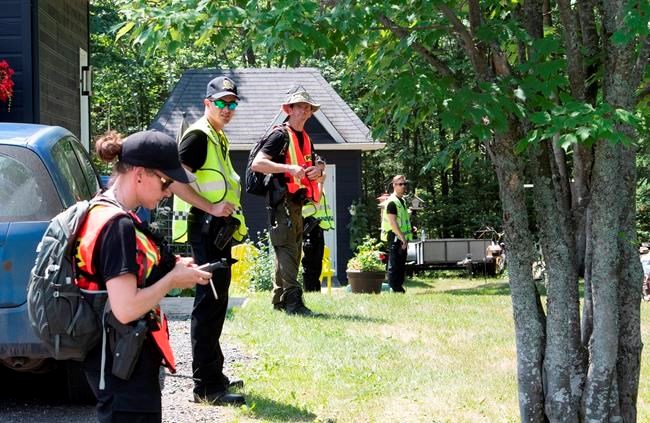ST-APOLLINAIRE, Que. — The dense, forested terrain southwest of Quebec City is likely complicating the search for the father of two girls who were found dead after becoming subjects of an Amber Alert, two experts said Tuesday as the manhunt stretched into its sixth day.
Francois Dore, a retired Quebec police officer with 33 years experience, said the rugged forest in the area offers plenty of hiding spots for someone looking to evade authorities.
"The biggest problem is it's wooded, it's dense, it's rugged, and it's quite big," he said in an interview. "It's big and there are lots of places to hide."
According to provincial police, officers on the ground and in the air were concentrating on a 50-square-kilometre area around the Quebec City suburb of St-Apollinaire, where the bodies of Norah and Romy Carpentier, aged 11 and 6, were found Saturday.
The girls were last seen Wednesday in the company of their father, Martin Carpentier. Police launched an Amber Alert the next day.
Steven Sadler, a retired Toronto police officer, says the police appear to have "a lot of ground to cover."
He said dense bushland takes a long time to search and can hamper the effectiveness of tools such as drones and helicopters equipped with heat-seeking cameras.
Sadler, who is now a director of training for the Canadian Tactical Officers Association, said police have likely divided the search area into a grid pattern and are scouring it for signs of Carpentier.
"They're not just looking for the man, they're looking for the clues," he said. "Every contact leaves a trace, as the old saying goes."
Provincial police spokeswoman Sgt. Ann Mathieu has said the girls and their father are believed to have been in a serious crash on Highway 20 in St-Apollinaire Wednesday evening around 9:30 p.m.
But police say they did not find any occupants inside the car when they arrived on scene. Mathieu said they found "pertinent elements" in the area on Sunday that were sent to a laboratory for analysis.
Police did not specify what the items were, but Dore said it was possible they were pieces of clothing or personal effects.
As the search entered its sixth day, police raised the possibility Carpentier could be unconscious or dead. Mathieu, however, said Tuesday they can't rule out he is alive.
"You know that someone who is healthy, someone who is mobile, can easily move by walking several kilometres a day," she told reporters. "We also have to consider that he could have found a means of transport, something as simple as a bicycle."
She said the area being searched was delineated based on reports from the public, and she urged people to remain on the lookout for Carpentier.
Dore believes anything is possible, including that Carpentier has died or left the search area altogether. "It depends on the state of his wounds, if he found food or water," he said. "Did he get help, or a way of getting around?"
Sadler said there's a chance Carpentier will never be found, especially if he has died in a dense area. "If he's died, it will be even worse, because there will no longer be any clues."
While the manhunt has captivated the Quebec public, Dore said the intense attention can be a mixed blessing for police.
The presence of well-wishing volunteers, some of whom reportedly showed up on the weekend, can muddy the trail, he said. They can also potentially place themselves in danger if they get injured or run into a desperate suspect, Dore added.
On the other hand, Dore said residents can be very helpful if they check around their properties for signs of the suspect and call police if they find anything suspicious.
Dore said it's normal for people to be asking questions after six days of unsuccessful searching, and police are likely doing the same.
But he said no matter what Carpentier has allegedly done, police want to bring him in alive, if possible. "I don't think anyone wants another useless death," he said.
This report by The Canadian Press was first published July 14, 2020.
— By Morgan Lowrie in Montreal
The Canadian Press




